Graham Reid | | 8 min read
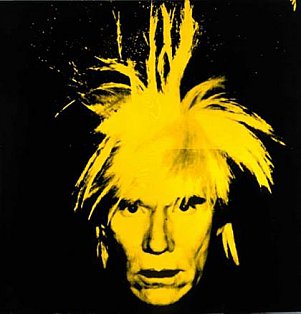
“People are always calling me a
mirror and if a mirror looks into a mirror, what is there to see?” -- Andy Warhol.
There's a scene in an Austin
Powers movie in which the superspy and international man of mystery
is in his London bachelor pad. Amid the iconography of the Swinging
Sixties is a large multiple portrait of Powers rendered in flat,
garish colours. In its signature style it could only be by one
artist.
Even now -- twentysomething years after his death and
more than 45 since establishing his distinctive portraiture style
with screen prints of Marilyn Monroe - the work of Andy Warhol is so
immediately recognisable it can be parodied and paid homage to,
recreated in the artist’s absence - and allow us a smug snicker of
recognition.
If Warhol had known Powers back in '69
he undoubtedly would have done his portrait - and it makes no
difference that Powers is fictional. In some senses Warhol doesn’t
seem to have existed either. He just was.
But what was he? Genius or charlatan,
artist or advertising man?
Andy Warhol - the youngest of three
sons born to a Czechoslovakian immigrant family in unglamorous
Pittsburg in 1928 - was the Chauncey Gardner of the art world, the
empty mirror, the blank slate.
His most recognisable expression might
have been a yawn, if he hadn’t been so wearily detached as to be
bothered opening his mouth.
Gore Vidal said he was a genius with
the IQ of a moron. But, the argument goes -- and it could only be
developed by some one who hadn’t read a Naomi Campbell or Jackie
Collins novels – no one that rich can be that stupid.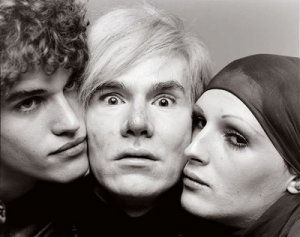
Debate over whether Warhol more
properly belongs to the history of art or the history of marketing were rehearsed again with the touring exhibition The
Warhol Look: Glamour Style Fashion in the late Nineties.
Significantly the extensive exhibition, curated by the Warhol Museum, came with a slew of tie-in
merchandising and was mounted in Very Serious Art Galleries.
Warhol, whether you like him or not,
has been enshrined and canonised by the establishment. He’s in the
history books and proper galleries, has his own museum in Pittsburg
and people looking after his licensed product in Germany.
Art or commerce? It hardly mattered
then, it certainly doesn’t now.
But this exhibition was about fashion
rather than art, so there’s not the comfort of the familiar Famous
Soup Can here. Rather, it was a deep immersion into the shallows of
Andy-world.
Yet if Warhol himself will always
remain an increasingly elusive and neutral figure, taken together
this show offers a self-portrait refracted through diverse works
across several fields.
Helpfully – given Warhol’s later
free-range forays into film, music, performance art and publishing --
The Warhol Look is inclusive and loosely chronological.
From the Forties, when Warhol was a
fragile art student (he’d had three nervous breakdowns before his
teens), we see something of his obsessive collecting of movie star
and glamour photos from magazines.
The title of this section, At Home with
the Stars, is a clever crock: the stars weren’t at home, but insecure
and unattractive Andrew Warhola was, melding his anxious dream life
into theirs -- and collecting what would become his raw material.
“Today everything is badly made,"
his mother said in 1973, “and those beautiful things he loves, like
the old movies, were better made.”
The Fashion Tips with Andy section
collects some of his commercial illustrations and window designs from
the Fifties. There are recreations of shop window displays for swanky
New York stores such as Tiffanys and Bonwit Teller – and here is a
hint of an alter-Andy: there’s a youthful playfulness to his
commercial illustrations redolent of Jean Cocteau, Ben Shahn and
Erte.
For those who would dismiss him on the
basis of his later work, here is proof too that he could draw –
although some (Joan Crawford, 1962) look like the kinds of clumsy
portraits preteen fans used to send to the Beatles around 1964.
His fascination with shoes as fetish
objects is well represented in illustrations and painted lasts. Here
too are effigies of Warhol, the perfect substitute for a man notable
for his emotional absence.
The Sixties are represented by Autopsy
at the Factory, Warhol’s famous silver-lined downtown warehouse
space which became a mecca for freaks -- and then the fashionable.
“A lot of people thought it was me
everyone at the Factory was hanging round,” he said, “but that’s
absolutely backward. It was me who was hanging around with everyone
else. People weren’t particularly interested in seeing me, they
were interested in seeing each other They came to see who came.”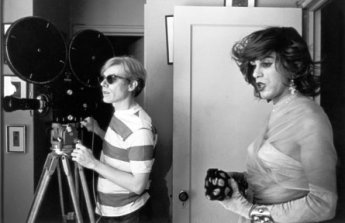
And through those doors came Bob Dylan,
poet Allen Ginsberg, homeless drifters and other detritus of the
Great Society. And the Velvet Underground (no footage in this
exhibition; presumably Lou Reed’s lawyers were as protective of
their client as Warhol's), Valerie Solanis who would shoot Warhol in
1968, “superstars” off the streets, drag artists and wannabe film
stars who became the subjects of his passive, often non-narrative
films which even the catalogue concedes are more fun to talk about
than sit through.
“I like the boring things,” he said
at the time, as if that would excuse any old drivel. For his acolytes
it did.
The exhibition includes his films Poor
Little Rich Girl, Chelsea Girls and Bike Boy, and screen tests for
the beautiful but doomed Edie Sedgwick, poet John Giorno, and a dozen
other Factory regulars whose talents (aside from Dennis Hopper) would
never translate much beyond 231 East 47nd Street.
Thereafter chronology and
categorisation is disassembled through Drag and Fashion and
Uptown/Downtown because after the Sixties -- being shot seems as
pivotal to Warhol’s career as Dylan’s motorcycle accident or
Lennon meeting Ono -- Warhol traversed the art and commercial worlds
as a dung beetle does a desert.
His autographic style became codified
and frozen, more cool and deadpan, and the elimination of
decision-making about rendering of surfaces eliminated both his
personality and that of his subjects from his Polaroid portraits.
Interview magazine -- of which the
exhibition has a number of displays of covers, photospreads and
fashion shoots -- became his in-house vehicle to flatter and pamper
the Uptown set.
His works in the Seventies and
Eighties, as he moved away from freaks to the fashionable, proved
only the power of a cheque-book and, like a moth attracted to the
brightest of lights, his tiny wings beat against the famous and the
feckless.
He might not have been a genius but he
had a gift, and in that captured the Zeitgeist of consumerism in the
Eighties. He did ads for rum, appeared on The Love Boat and fashion
catwalks, and died eight months before the stockmarket crash which
sent the crowd from Studio 54 -- his substitute Factory – into
rehab or real jobs.
Black Tuesday might have been the end
of what critic Robert Hughes called Warhol’s “supply-side
aesthetics” but, as with his beloved Marilyn, death can be a good
career move.
The Pope of Pop was gone; long live the
mandarins of marketing.
So, how to define the Warhol style?
His work across an indiscriminate
spectrum is enticingly insipid, transparent, endlessly repeatable,
neutral and neuter. It is the atrophying of expression and gestures
of effort, a Rorschach abstract in which we locate our own meaning.
In the Eighties Warhol may have
reinvented the genre of portraiture, but in it he became as
fraudulent as Dali, a court painter to the profligate rich for whom
his signature was like a passport into the Kingdom of the Chic.
His vacuous portraits -- blanded out
into outlines and flat colour -- hardly bear sharing a genre with
Goya’s portrait of Queen Maria Luisa, or Sir Joshua Reynolds.
The coalminer’s son from Pittsburg
was now delivering to women who lunch, their Uptown husbands a
vindication of their lives, an elevation to the level of Marilyn and
Liz, Elvis and Joan Crawford by Andy-association. Under the eye of
the Warhol Polaroid anyone could become a secular saint.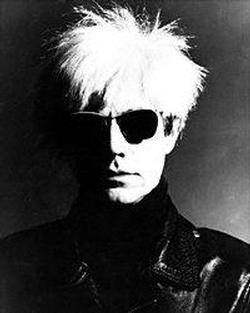
All you needed bo do was pay for the
privilege.
As with his films and interviews in his
magazine, his later work carries no special weight or virtue beyond
his name being attached to it, like a Calvin Klein tag on a shirt
collar Warhol liked that about it.
“If you want to know all about Andy
Warhol,” he said, “just look at the surface of my paintings and
films and me, and there I am. There’s nothing behind it.”
That very affectlessness of his art
lies at the heart of Warhol’s career and still attracts hostility
But Warhol was about reversals: he inverted the order which said
celebrity followed work well done, and where art was about the
one-off unique object he made multiples.
He found his superstars on the streets
and the artist was as important as his subjects.
The Warhol Look is a blockbuster by an
icon whose name is as synonymous with merchandising as art - and its
subject, being at that profitable interface, lends itself to
heavyweight promotion.
And all because of an opaque little man
who became his own greatest creation.
The enduring, perfect Warhol statement
is in the exhibition: one of his wigs, framed. No face beneath it.
The invisible man, only able to be seen through his work.
And even then . . .

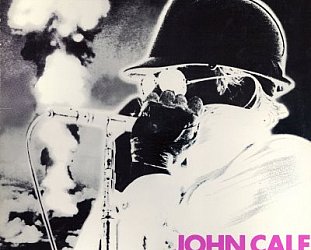
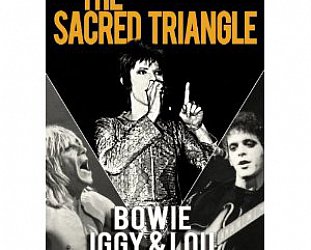

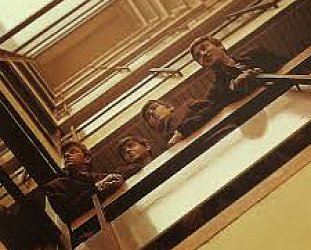

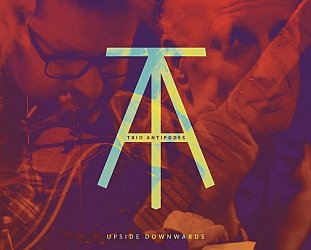
post a comment